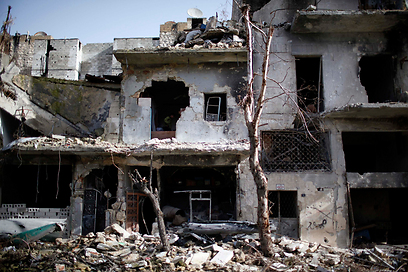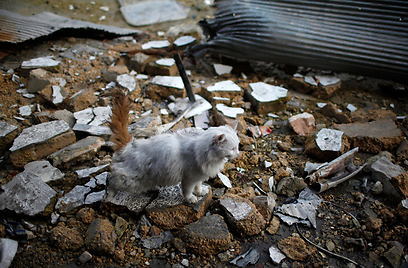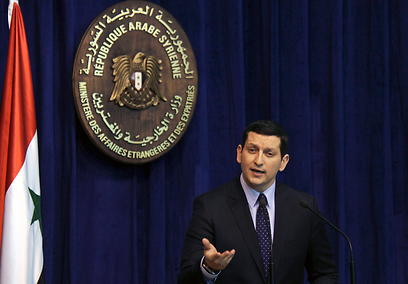
Syrian rebels report 18 cases of chemical attacks
Free Syrian Army official says Assad's army used chemical weapons in Damascus, Idlib, Homs and Hama; adds that regime using new type of toxic gas causing infection, asphyxiation
A day after reports surfaced of a mysterious gas being used by the Syrian regime, rebels are claiming it was not the first time chemical weapons were employed by Assad's army.
"The opposition recorded 18 separate cases of chemical weapons attacks in the outskirts of Damascus, idlib, Homs and Hama," said Free Syrian Army official Louai Muqdad.
Related Stories
- 'Sarin-like gas' kills 7 in Homs
- Russia: Syria acting to secure WMDs
- Report: US, Russia agree on end to Assad's rule
In an interview with the London-based al-Sharq al-Awsat, he noted that the gases used in Homs were used there for the first time but did not provide proof for his claims. On Monday, opposition elements reported that seven people were killed from gas inhalation in Homs.
Al-Jazeera reported that dozens were hurt in the EL Biadia neighborhood. According to the reports, the victims suffered from nausea, muscle laxity, blurry vision and shortness of breath.

Syrian bombing (Photo: Reuters)
Adnan Salou, the former chemical warfare chief in the Syrian army, also claimed that Assad's forces used chemical weapons in Homs. He noted that the bombs contained the lethal Sarin gas nerve.
In his interview Muqdad added that Assad was using a new type of toxic gas and estimated that the Syrian regime had only recently obtained the new weapons. "They got new types of chemical weapons which caused skin rashes and infections as well as asphyxiation.
Al-Sharq al-Awsat further reported the commander of Syria's military police, Major General Abdulaziz al-Shalal, has defected and joined rebel forces. He is the highest ranking military commander to defect since the beginning of the conflict.
According to sources within the Syrian opposition, the commander holds much intelligence on the regime's actions, as well as on the situation in military jails.

'New type of toxic gas' (Photo: Reuters)
Earlier this month, it was reported that Syrian Foreign Ministry spokesman Jihad Makdissi had disappeared. On Tuesday, Britain's The Guardian reported that he was co-operating with US intelligence officials who helped him flee to Washington.
Makdissi became one of the most prominent regime defectors in late November when he left Beirut after first crossing from Syria. Syrian officials have denied that Makdissi defected, saying he had instead taken three months of administrative leave.

Jihad Makdissi (Photo: Reuters)
However according to The Guardian, at the time of his departure, Hezbollah's television network in Beirut – not known to be out of step with the regime line – announced that the spokesman's views had strayed from official positions and that he had been fired.
The US State Department did not respond immediately to requests for comment, and the CIA was unwilling to discuss the story.
The Guardian further reported that former Syrian Prime Minister Riyad Hijab and former general Manaf Tlass, both Sunni Muslims, have been instrumental in shaping western views of how decisions are taken in Syria and the influence of foreign stakeholders.
- Receive Ynetnews updates directly to your desktop











